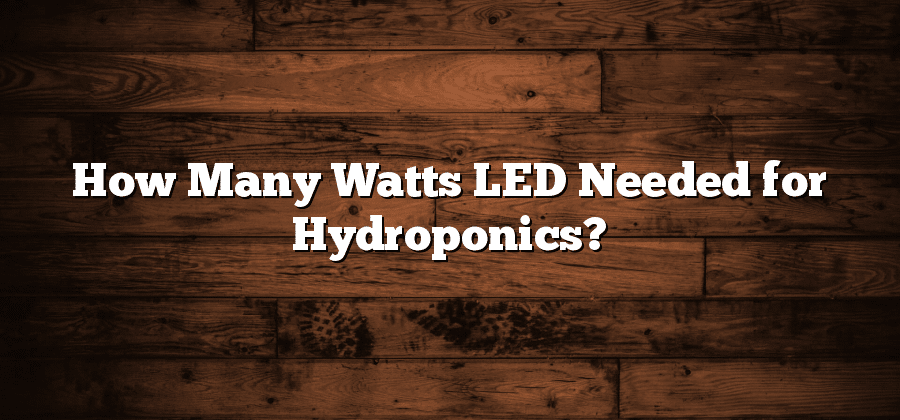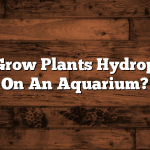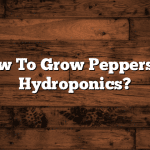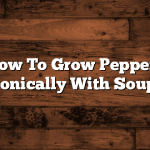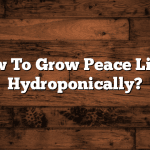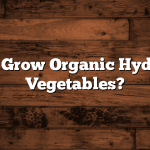Understanding the Lighting Requirements for Hydroponics
Hydroponics, a method of growing plants without soil, has gained popularity in recent years due to its numerous advantages. One of the key factors that contribute to the success of a hydroponic system is proper lighting. Understanding the lighting requirements for hydroponics is crucial in order to provide the optimal conditions for plant growth and cultivate a thriving garden.
When it comes to lighting, the most commonly used technology in hydroponics is LED (Light Emitting Diodes). LED lights offer several advantages over traditional lighting sources such as incandescent bulbs or fluorescent tubes. They are energy-efficient, provide a specific spectrum of light, and emit less heat, making them ideal for indoor gardening. However, choosing the right LED wattage for your hydroponic setup is essential to ensure optimal plant growth and yield. The wattage requirement depends on various factors including the type of plants being grown, the stage of growth, and the dimensions of the growing area. It is important to strike a balance between providing enough light intensity for photosynthesis and avoiding light burn, which can damage the plants. So, let’s explore the factors to consider when choosing LED wattage for hydroponics and get a deeper understanding of the lighting requirements for this innovative gardening technique.
Factors to Consider When Choosing LED Wattage for Hydroponics
When it comes to hydroponics, choosing the right LED wattage is crucial for the growth and productivity of your plants. LED lights are a popular choice among hydroponic enthusiasts for their energy-efficient and effective lighting capabilities. However, the wattage of the LED lights you choose can greatly impact the success of your hydroponic system.
One important factor to consider when selecting LED wattage for hydroponics is the size of your growing area. The wattage needed for an indoor garden will depend on the dimensions of the space and the number of plants you plan to grow. A larger area with numerous plants will require higher wattage to ensure adequate light coverage. On the other hand, smaller setups may only require lower wattage options.
Another factor to consider is the type of plants you are cultivating. Different plants have varying lighting requirements, such as light spectrum and intensity. Leafy greens, for example, typically thrive under lower wattage LED lights, while fruiting plants like tomatoes or peppers may benefit from higher wattage options. Understanding the specific needs of your plants will help you determine the appropriate LED wattage for optimal growth and yield.
The Role of Light Intensity in Hydroponic Systems
Light intensity plays a crucial role in the success of hydroponic systems. Unlike traditional soil-based gardening, hydroponics relies on artificial lighting to provide the necessary light energy for plant growth. The intensity of the light emitted by these artificial sources directly affects the rate at which plants photosynthesize, and subsequently, their overall growth and development.
Proper light intensity ensures that plants receive an adequate amount of energy for photosynthesis. When the light intensity is too low, plants may become weak and leggy as they stretch to reach the light source. On the other hand, excessive light intensity can cause stress and damage to the plants, leading to leaf burn and stunted growth. Therefore, finding the right balance of light intensity is essential in order to optimize the growth and yield of hydroponic crops.
Evaluating Different LED Wattage Options for Hydroponics
When it comes to hydroponics, choosing the right LED wattage is crucial for the overall success of your system. LED lights are a popular choice among hydroponic growers due to their energy efficiency and ability to provide the specific light spectrum needed for plant growth. However, with different LED wattage options available, it can be challenging to determine which one is the most suitable for your setup.
One factor to consider when evaluating LED wattage options is the size of your hydroponic system. Larger systems with more plants may require higher wattage bulbs to ensure adequate light coverage. On the other hand, smaller systems may be adequately served by lower wattage bulbs. It’s important to find a balance between providing enough light for optimal plant growth without overloading your system with excessive wattage. Additionally, consider the type of plants you’re growing and their specific light requirements. Some plants, such as leafy greens, may thrive with lower wattage bulbs, while fruiting plants might benefit from higher wattage for increased yield. By understanding the specific needs of your plants and the size of your system, you can make a more informed decision when evaluating LED wattage options for your hydroponics setup.
Determining the Optimal LED Wattage for Your Hydroponic Setup
When it comes to determining the optimal LED wattage for your hydroponic setup, there are several factors to consider. One of the crucial factors is the type of plants you are growing. Different plants have varying light intensity requirements, and selecting the appropriate LED wattage is vital to ensure optimal growth and yield.
Another factor to consider is the size of your hydroponic system. The wattage needed for a small-scale setup may differ from that of a larger one. It is important to understand the coverage area of the LED lights and ensure that it adequately reaches all the plants in your hydroponic system. Additionally, factors like the height of your plants and the distance between the light source and the canopy also play a role in determining the optimal LED wattage.
In conclusion, determining the optimal LED wattage for your hydroponic setup requires careful consideration of various factors, such as the type of plants being grown and the size of your system. By understanding these factors and making informed choices, you can ensure that your plants receive the right amount of light for their growth and development, ultimately leading to a successful hydroponic harvest.
